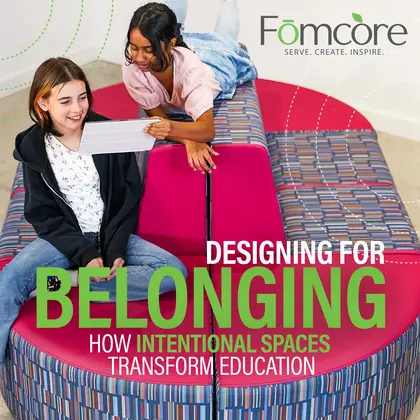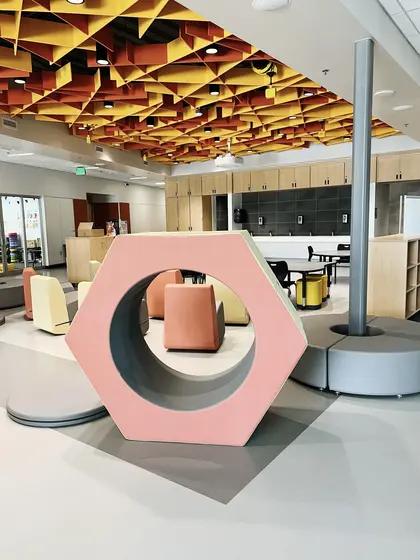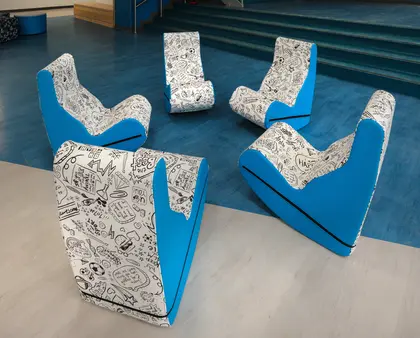Loading...

Designing for Belonging: How Intentional Spaces Transform Education
In today’s educational landscape, the importance of creating spaces that foster belonging has become increasingly clear. A sense of belonging is not just a “nice-to-have”; it is a foundational element for student success. Research consistently shows that when students feel they belong, they are more engaged, more motivated, and achieve better outcomes academically and socially. Intentional design choices in classrooms, schools, and learning environments can play a pivotal role in cultivating this sense of belonging.
The Connection Between Belonging and Learning
Belonging is deeply tied to trust and relationships. In classrooms where students feel seen, heard, and valued, they are more likely to take risks, ask questions, and fully engage in the learning process. This psychological safety enables students to step outside their comfort zones, which is critical for academic growth. However, fostering belonging is not just a box to tick off. It’s about the trust and relationships that are built between students and teachers, as well as the peer-to-peer connections that are nurtured within the space. These relationships are the foundation upon which a sense of belonging grows—a fundamental need that carries throughout every student’s life.
Although there’s no one-size-fits-all solution, there are some concrete principles that you can look at testing in your classroom as you explore ways to encourage feelings of belonging within students.
Principles of Intentional Design for Belonging
1. Inclusive Color Palettes and Materials: Thoughtful choices in color and materials can greatly impact how students perceive and interact with their environment. Warm, neutral tones paired with vibrant accents can create an inviting atmosphere, while materials that mimic nature—like wood or grass-like textures—can evoke feelings of calm and comfort.
2. Zones for Diverse Activities: Spaces that provide distinct zones for various activities—collaborative group work, independent study, sensory regulation, and play—ensure that every student’s needs are considered. These zones signal to students that their ways of learning and interacting are valued.

3. Flexible and Adaptive Furniture: Learning environments that incorporate flexible seating and adaptable layouts empower students to make choices about how and where they learn best. From quiet corners for solo study to open configurations for group work, these designs allow spaces to meet the evolving needs of students throughout the day.
4. Visual Representation and Personalization: Including student work, culturally relevant imagery, and affirming messages within the space helps students see themselves reflected in their environment. Personalization fosters ownership and a sense of pride in the space, reinforcing the idea that it is made for them.

Design in Practice: Case Studies
Schools that have embraced intentional design for belonging have seen transformative results. For example, a school that redesigned its library to include cozy reading nooks, flexible seating, and student-designed murals “reported a 40% increase in library usage and significant improvements in attitudes toward reading” (Design Council, 2015). Similarly, classrooms with modular furniture and clear zones for collaboration and quiet time fostered better peer interactions and “higher levels of student participation in both academic and social activities” (National Center on Safe Supportive Learning Environments, 2021). These examples highlight the tangible impact of design choices that prioritize belonging and functionality.
Beyond Furniture: The Role of Relationships
While design is a powerful tool, belonging ultimately stems from the relationships built within these spaces. Teachers and staff play a critical role in modeling inclusivity and creating a culture of trust. Design should support these efforts by providing environments that facilitate connection—whether it’s through a comfortable meeting area for one-on-one discussions or flexible setups for group collaboration.
Moving Forward
Designing for belonging is an ongoing process. It requires a commitment to listening to students, analyzing outcomes, and adapting spaces to meet evolving needs. By placing belonging at the center of educational design, schools can create environments where every student feels valued and equipped to succeed.
References:
Maslow, A. H. (1943). A Theory of Human Motivation. Psychological Review.
Baumeister, R. F., & Leary, M. R. (1995). The Need to Belong: Desire for Interpersonal Attachments as a Fundamental Human Motivation. Psychological Bulletin.
Steele, C. M. (1997). A Threat in the Air: How Stereotypes Shape Intellectual Identity and Performance. American Psychologist.
Design Council. (2015). The Value of Design in Education.
National Center on Safe Supportive Learning Environments. (2021). Improving School Climate and Student Outcomes.